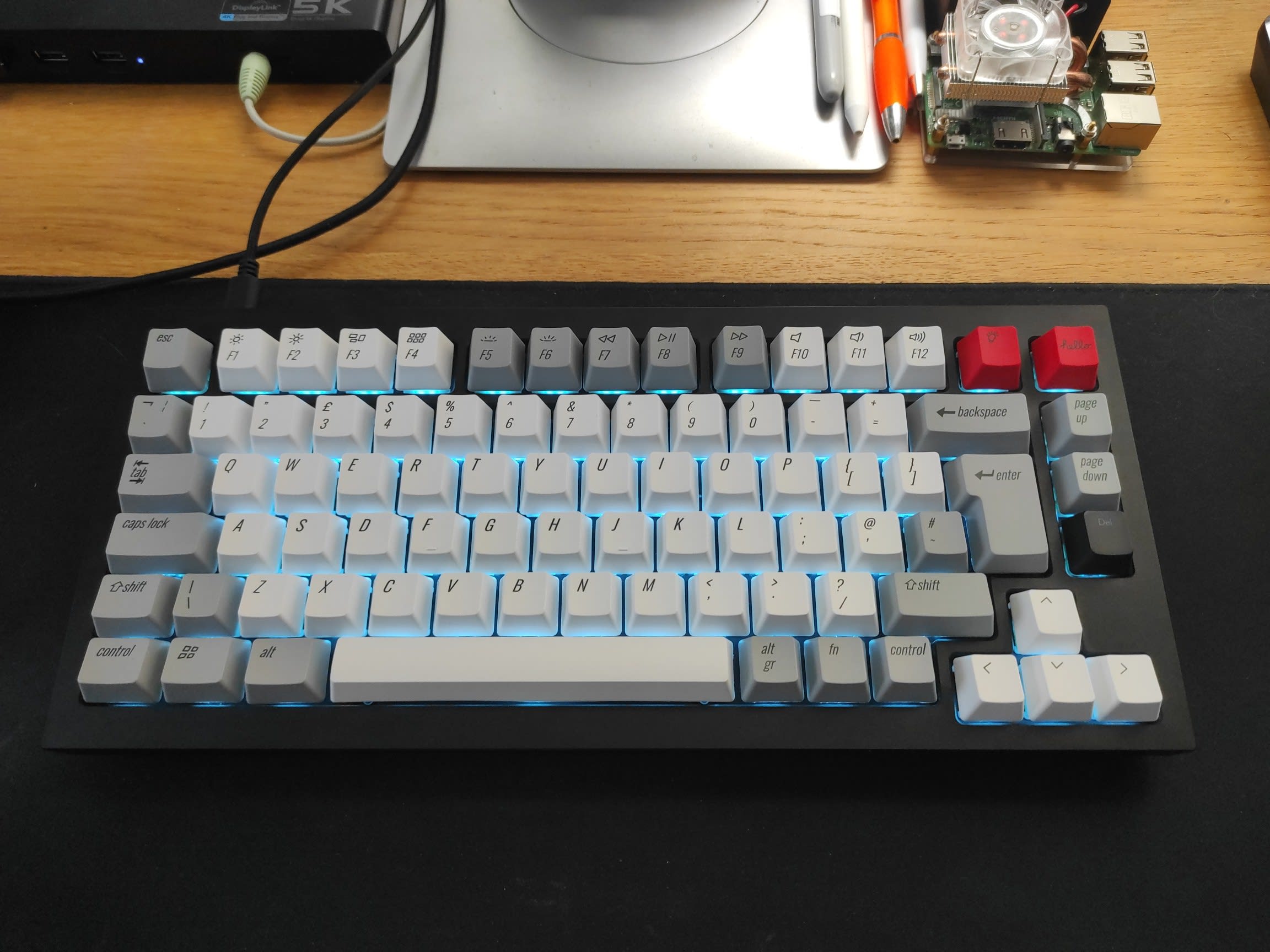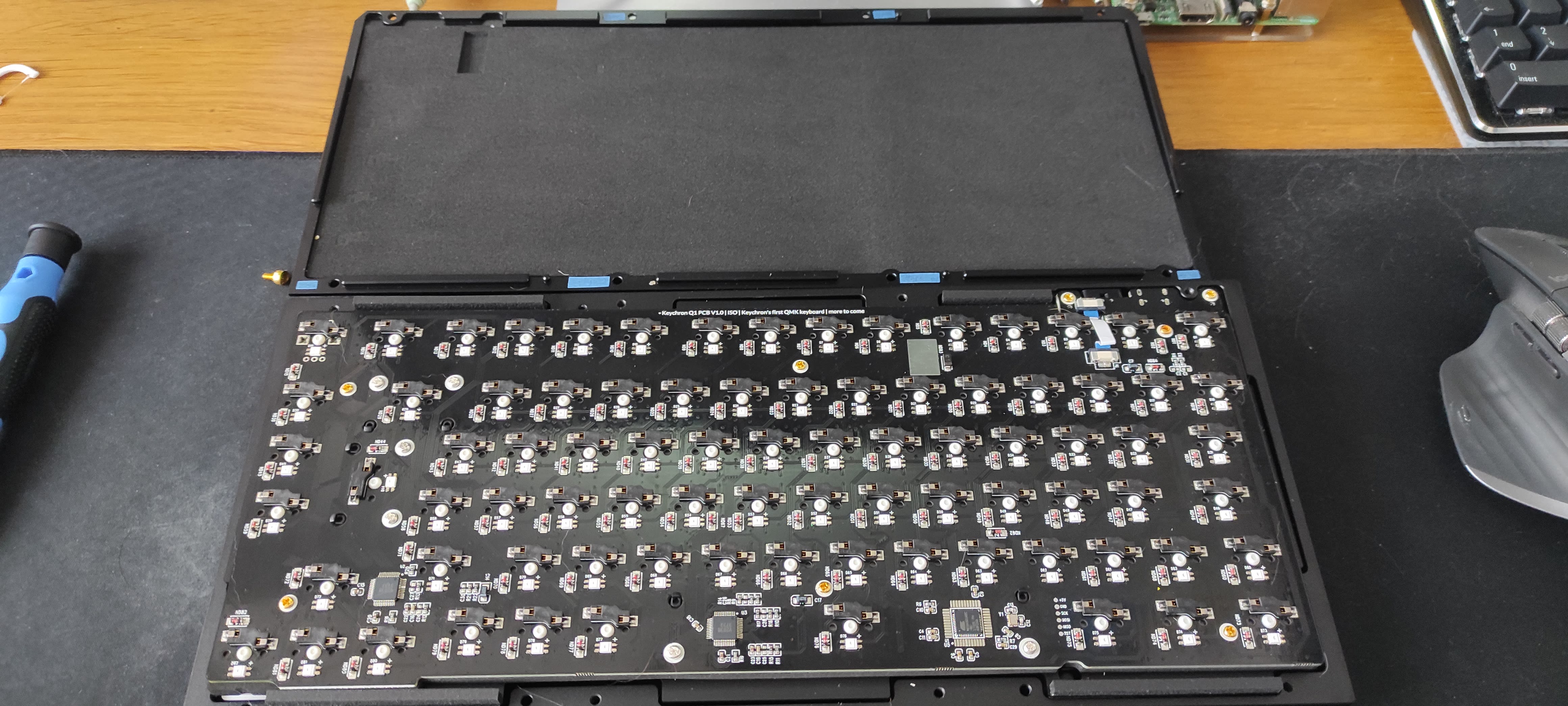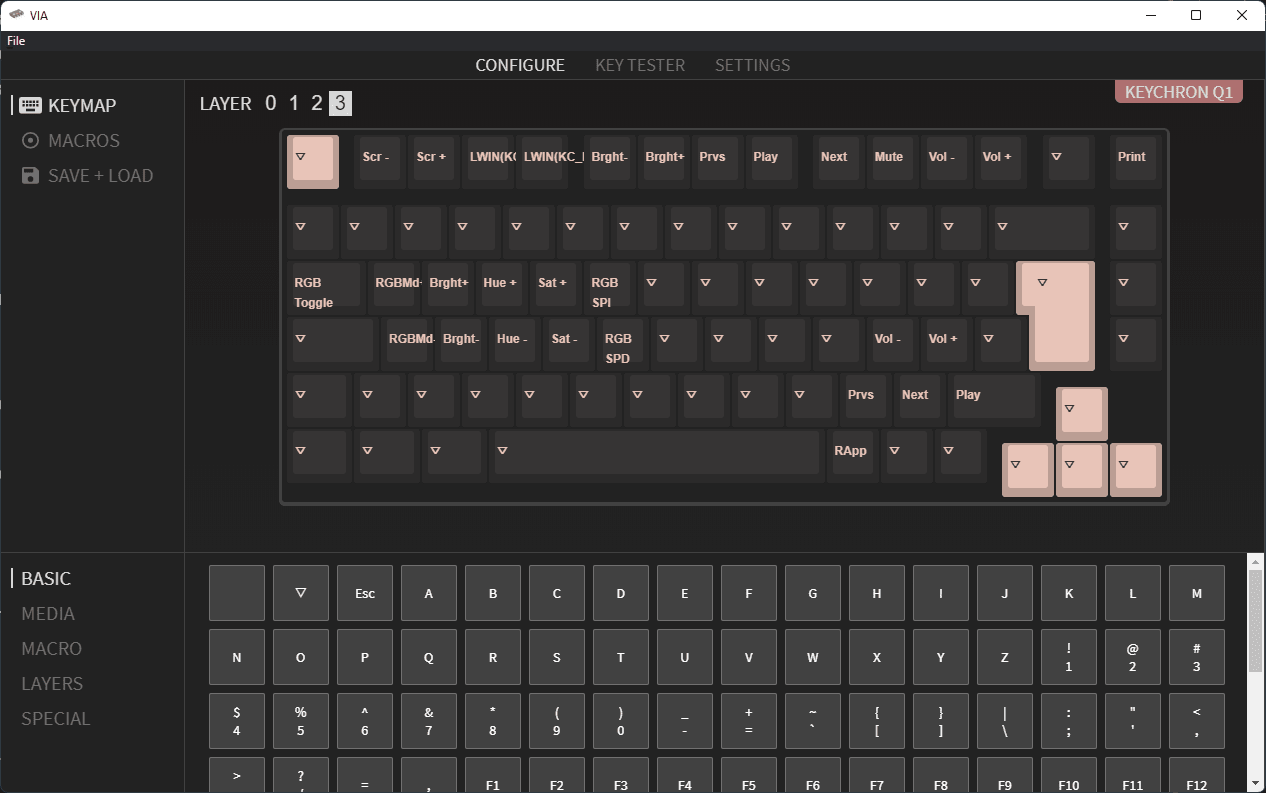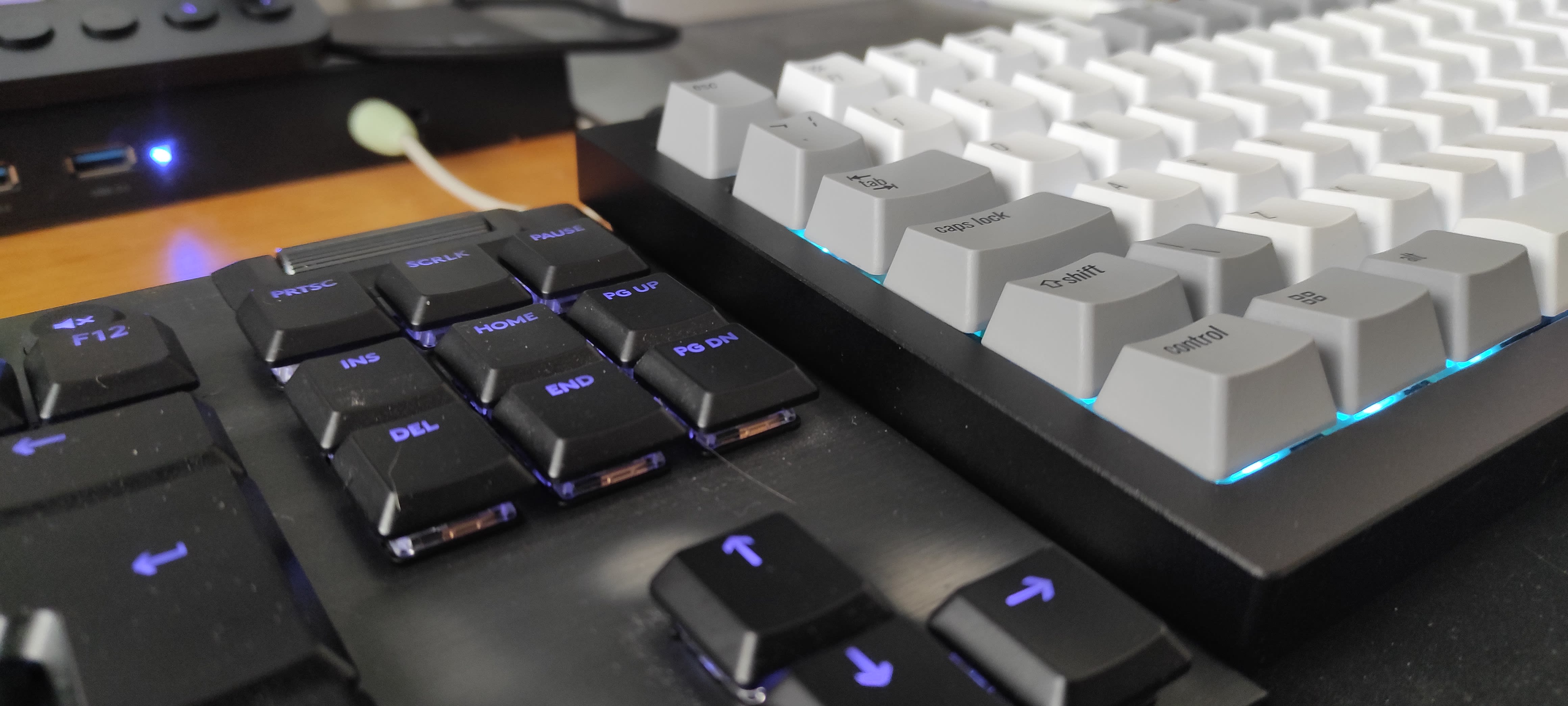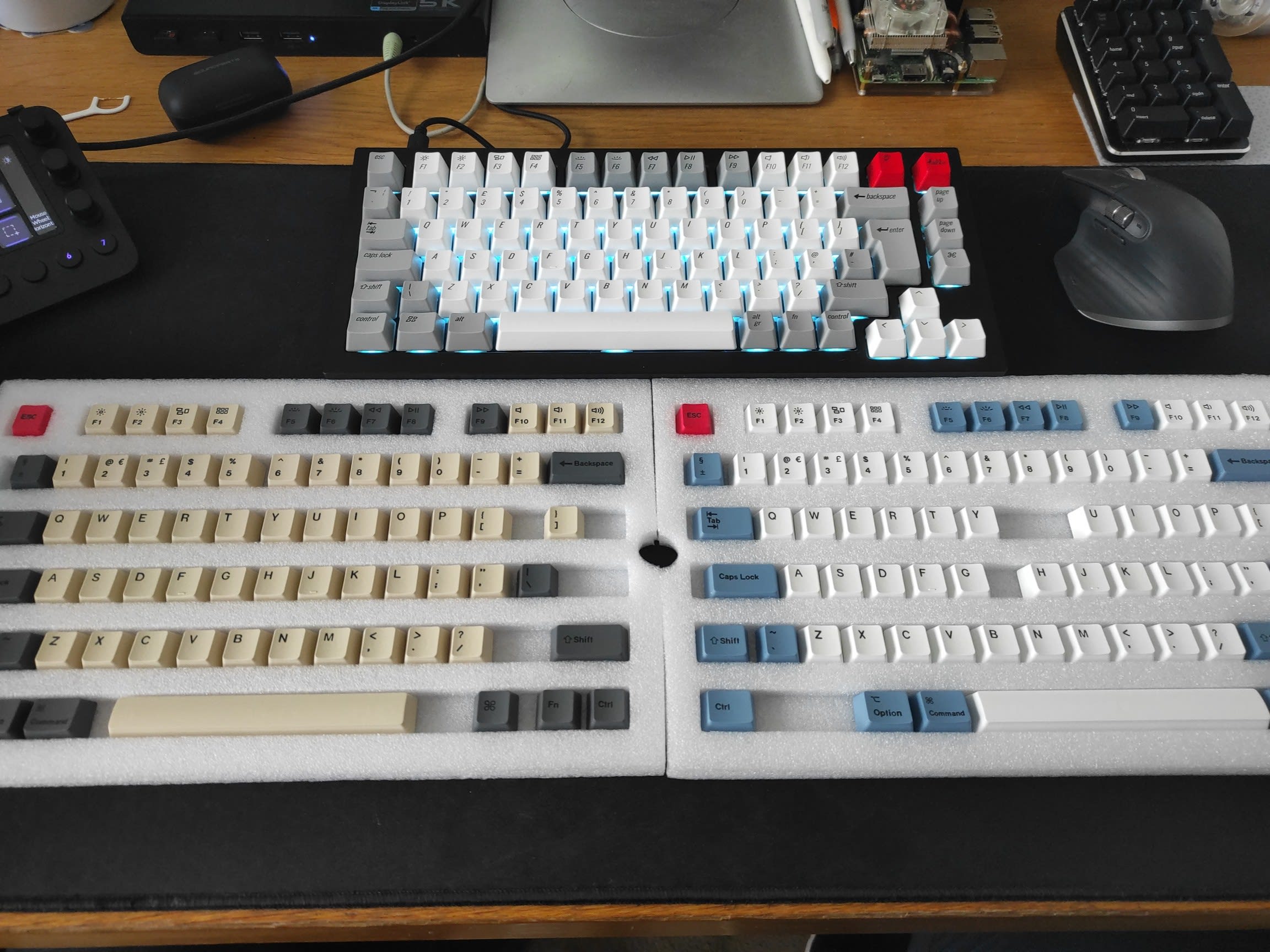Keychron Q1 - First Impressions
I’ve now gone through quite a few mechanical keyboards in a relatively short time. The first couple of times were to replace the current faulty one I was using. This time around it was more of a sustainability decision than a replacement.
I’ll do a quick run-down of the history of the keyboards I’ve had that got me to this point! I got the Logitech G815 because I had issues with the Ctrl key on the HAVIT KB395L.
I got the Logitech G915 as it seemed like a logical next step from there for me because I didn’t really vibe with the Logitech macro keys on the far left of the board.
The G915 was (and still is) a really nice board to type on.
Why change from the G915
The G915 was what I thought to be my “end game” board. It had the media controls on it, which was a main decision in me getting it. It also had the super nice low profile Kailh switches I really liked typing on.
The only thing is with a factory made board like this, if there’s issues with one of the switches, you can’t just replace it. So, say the Ctrl key starts playing up again (which it did). There’s two options, open up the keyboard to replace the broken part. Or replace the entire keyboard.
When this happened I did a bit of research and found a couple of YouTube videos:
There’s a whole lot of screws that comes out of that board! Also other things like a heat gun you’d need (or hair drier) a soldering iron and sourcing the new parts!
Let’s go custom!
So, I decided the best way to keep a keyboard for more than 18 months without it breaking and having to possibly have to break out a soldering iron was to get a keyboard that would be easily serviceable.
From looking at subreddits for mechanical keyboards this looks like it can be a bonkers expensive hobby. Something I really want to avoid!
The main criteria for me on a new board would be:
- Easily change parts when they break
- Media controls built into the board
- 75% size, so full size without the number pad
I really, really liked the volume roller on the G915 and the G815 so something that had some form of manual volume adjustment was also on that list.
There’s a lot to choose from
When it comes to mechanical keyboards, there’s a lot to choose from. But not a lot to choose from if you want an ISO keyboard!
I still really like the ISO keyboard layout (large enter key) and there’s surprisingly few boards out there that I could choose from.
The two candidates I found after searching was the Keychron Q1 and the GMMK Pro.
From what I could glean from YuTube videos they both had the same volume knob on the top right of the board. I found out later that neither of them shipped with the knob! That was a mod you had to do yourself.
Both options didn’t ship a fully built board either so I had to go about seeing if I could get the parts I really needed.
GMMK have a really nice customiser option on their site where you can pick every detail of the board you want. This was only for ANSI boards though and the ISO option was a bit more complicated.
I had to go through the ANSI customiser and pick the parts I needed then try translate that into the ISO option.
Keychron was a similar option with only a barebone ISO board on offer. With both options for the barebone option you get the case and the Printed Circuit Board (PCB). You still have to get switches and keycaps.
So the Keychron Q1 was what I settled on after watching many, many YouTube videos! There were some issues with the Keychron case sounding “pingy” but the reviewers said this was going to get fixed in the production boards.
Switches
The main reason I wanted a custom keyboard was to have the ability to change the switches, but what switches do I go for?
If you are going down this path and have watched any YouTube videos on customising keyboards, you’ll see there’s a lot of attention when it comes to making the switches sound “nice”.
There’ll be whole sections of the videos where they’re disassembling the switches and adding film to them then applying lubricant to them to get the nice feel.
I just want to be able to bang in the switches and not worry about it! 😊
The happy medium for me was to get switches that come lubed already! If you are paying attention to any of the videos then they will always say it’s better to lube them yourself, but I really don’t have the time or patience to do that!
When going through the GMMK option I saw they sold pre-lubed switches GMMK Pandas. Which they sell in packs of 36 for some reason?? So I had to get 3 packs of switches to make up the whole board.
I have always liked the blue clicky switches from the Logitech G915 but I do know that they can get super loud and annoying. The pandas seemed like a good compromise with the tactility of a blue without the clack!
Keycaps
One of the main reasons for going with the Keychron Q1 over the GMMK Pro was the selection of keycaps that were available for the Q1.
After doing some research on keycaps I found that they can get crazy expensive! Like $500 for a set! That, then there’s also the risk that you might not have all the caps for your board!
What about the ping?
The ping wasn’t really present in the board I got from Keychron. There was an additional layer of foam in the base of the keyboard I got which filled up the gap that was causing the “ping” reported by reviewers.
I did get some masking tape to put on the back of the PCB if I did hear a “ping” but I found another mod that suggested adding a tiny sliver of tape next to each of the mounting screws, which I did.
You can see the imprint of the PCB on the foam there, so it’s a really tight fit with the additional layer of foam in there.
Programmable with Via and QMK
One of the best features of the Keychron Q1 and the GMMK Pro is support for both Via and QMK. These are open source programs that allow you to add additional functionality to the board and to remap keys.
One of my concerns was media controls, these are on the F keys row on
the top row of the board. So, play, pause, previous/next track, volume
up/down and mute. So holding down the fn key and pressing one of
them controls the media.
What I did find was that the key combination of the fn key and then
reaching up to the top of the board with the same hand was a bit of a
reach, that or I used my other hand.
With Via I have kept the media keys in place and also added additional
keys to control media which are located a lot closer to the fn key.
The Via GUI shows four layers, layers 0-1 are for Mac, 2-3 for
Windows/Linux. Layers 0 and 2 are for the normal keys you would have
and layers 1 and 3 are for the function (fn) keys.
Here you can see I’ve added the media controls around the function key for one handed use:
But what’s it like to use?
Honestly, it’s nice to type on, the slight elevation of the keyboard meant a bit of adjustment but I’ve not suffered from any RSI on it. Something I was worried about when you take a look at the elevation of the Q1 compared to the G915.
The GMMK panda switches are nice to type on the tactile bump is there and as someone that listens to music while typing I don’t really miss the clicking.
With the smaller size of the board there’s some of the cluster of keys missing above the arrow keys you can see in the size comparison here:
I’ve not really missed any of them to be honest, the one thing I had to map to a function key was the Print key, which I only really use for taking a window screenshot!
Purchasing
If I had to go through the same process again I’d still get the Keychron Q1, but, instead of purchasing the GMMK Pandas I’d probably gone through a different supplier. The switches took a really long time in shipping. I’ll avoid getting anything through GMMK in the future.
This isn’t really something I’d want to invest a great deal more of my time researching and doing. If I do need to get new switches or keycaps I’ll research suppliers that ship from my region in Europe.
For keycaps I purchased the three that were available from Keychron that were made for the Q1. If they make any more in the future then I’ll probably purchase through them.
One word of warning with Keychron is if you get a keycap set through them then check the contents. I had an arrow key missing from one of the sets. I informed them about it and they were happy to ship the missing part. Although it still hasn’t turned up yet!
Conclusion
I’m really happy with the ability to add any additional functionality I need with the software available in Via. If there are any issues with any part of the board I can open it up and troubleshoot any issues with the Via Key Tester.
If there need to be a switch replaced then it’s a simple case of taking off the keycap and pulling out the switch and replacing it. If there are any issues with the PCB I can reach out to Keychron to get a replacement.
So far I have not seen any negatives from using the board for a couple of months now.
If you’re in a similar situation then I’d recommend getting a board where you an swap out any parts which are causing issues.
There's a reactions leaderboard you can check out too.
